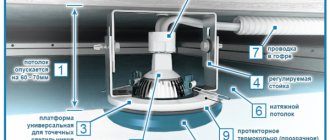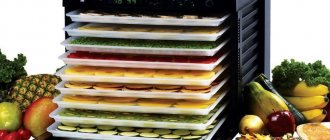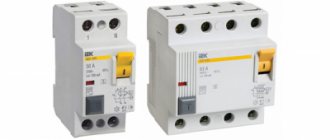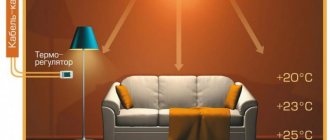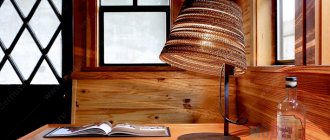Hello dear readers. I bring to your attention another article from the category of fishing gear. In it we will look at a very popular bottom tackle with a simple name - “Feeder”, dwelling in detail on all its elements and installation schemes.
The material of the article is presented in the following order:
- Features of feeder gear - improved donkey.
- Requirements for the elements of the English donkey: the rod; to the coil; to the fishing line.
- The operating principle of feeder gear.
- Installation diagrams for popular feeder equipment.
- Features of the improved donkey.
Types of feeder equipment
Let's list them:
- Paternoster. The lateral outlet of the equipment will allow the feeder to freely sink into the grass or stones without providing resistance to the fish that takes the bait.
- Loop systems (symmetrical and asymmetrical). The equipment does not lose its sensitivity even in weak currents. It is also used when fishing without a feeder. Asymmetrical equipment is the most popular. It can be used in reservoirs with any current. It differs from symmetrical in that one arm of the loop is 10 cm longer than the other.
- The tube is an anti-twist. Effective operation of the anti-twist is possible provided that the liner is shorter than the length of the arm of the anti-twist. With such equipment it will be almost impossible to see the fish biting.
- "Combine harvester." This type of equipment has the characteristics of both a paternoster and an anti-twist tube. During the hooking, only the feeder will come off.
- "Inline". The mechanism of this equipment ensures that the feeder slides along the main line.
- "Helicopter". The feeder is attached to the end of the main thread, and the leash can move freely along it.
Fishing conditions:
- When you come to fish, you should first inspect the reservoir and choose a comfortable place for fishing. Ideal conditions are: a wide bank without trees or grass, in which to install stands for fishing rods and sit comfortably.
- It is necessary to study the bottom of the reservoir. To do this, you need to fix the load on the main thread and make several casts into the water. Depending on the period of time it takes the sinker to reach the bottom, it is possible to determine the differences and depth of the bottom.
It is necessary to prepare the bait mixture correctly. There are several different types of bait, which one to use depends on the type of fish you will be catching.
You can add sugar cookies, breadcrumbs, corn flour, coconut flakes, and hemp seed (ground) to the mixture.
All ingredients need to be mixed in an arbitrary ratio, and the mixture should be fed not only to the area, but also to the feeder.
If the current is fast, then the bait needs to be made thicker, or special sticky impurities should be added to it.
It is necessary to add a bait to the bait mixture. These could be worms or maggots.
When all the gear is collected, you need to fill the feeder with bait mixture, bait the worm on the hook, and throw the feeder rod into the water. If after ten minutes there is no bite, the feeder can be re-thrown.
If you can’t hook the fish in time, you need to change the length of the leash.
Complete step-by-step instructions for equipping the feeder:
- Insert the rod legs one into the other;
- Install the coil using the screw mechanism;
- Wind the fishing line onto the reel;
- Attaching a shock leader;
- Attach leadcore (catching large fish);
- Selecting and attaching feeder equipment to a shock leader or leadcore.
Feeder leashes
The leash for the feeder tackle is made of monofilament, the thickness of which depends on the weight of the prey. If the catch consists of roach and small crucian carp, then a diameter of 0.08-0.12 mm will be enough. If you plan to extract larger quantities, then it is better to take a monk with a thickness of 0.12-0.18 mm.
Line BROAD 100 m OWNER 331 for 1 pc. Line ICE CRYSTAL Nylon Transparent 30 m Helios 95 for 1 pc. Line MONOLINE Green 0.16mm/100m Nylon Nisus (N-MG-016-100) Nisus 87 for 1 pc. X-Line Pikeperch line 100 m AQUA 75 for 1 piece. Line Crystal 150 m light gray Rubicon 120 for 1 pc. Line MONOPOWER FEEDER 0.16mm/100m Green Nylon PREMIER fishing (PR-MF-G-016-100) Premier Fishing 85 for 1 pc. Line UNO 0.16mm/100m Clear Nylon PREMIER fishing (PR-UC-016-100) Premier Fishing 72 for 1 pc. Line UNO 0.16mm/100m F.Yellow Nylon PREMIER fishing (PR-UY-016-100) Premier Fishing 72 for 1 pc. Line UNO 0.18mm/100m Blue Nylon PREMIER fishing (PR-UB-018-100) Premier Fishing 54 for 1 pc. Tournament Pro fishing line 50 m ALLVEGA 150 for 1 piece.
Monofilament lines for feeder leashes in the catalog
Fluorocarbon is also perfect for leashes; its characteristics are no worse than those of monofilament, in addition, it is not visible in the water. The thickness may exceed the recommendations for monofilament, since it is invisible to fish. The length of the leash can vary from a minimum of 15 to 20 cm. For fishing in the current, you need to increase its length to 50 cm and above. The choice also depends on the target fish, for example, for a stable bite of finicky roach in the water column, sometimes you have to fish with a leash from 2 to 2.5 m. The river is the best place to experiment with the length to find the optimal one.
Bite alarm
Special alarms, which can be either audio, visual or combined, allow you to timely record and detect bites. The most common and practical alarms in bottom fishing are those in the form of a bell or bell, which are installed on a cord or quivertip tackle. Some fishermen prefer to detect bites directly by the tip of the rod, but such fishing can certainly be carried out with only one tackle. There are electronic bite alarms on sale that convey the contact of the fish with the bait with sound and light, and some kits are even equipped with a pager to transmit the signal over a distance. Such alarms are convenient not only for fishing in the daytime, but also comfortably allow you to fish in the dark.
Inline equipment
One of the most used types of equipment, it has the following qualities:
- can be used on rocky bottoms and shell rocks;
- does not prevent cautious fish from trying the bait;
- ease of manufacture, even directly on a pond;
- 100% effectiveness when fishing in the current;
- good efficiency in calm water (80%);
- low entanglement in water (10%);
- Great for catching fish from the bottom.
This installation is the safest for fishing. If for some reason the main line breaks off, the fish can easily free themselves from the feeder. Inline is widely used by sport fishermen as the only permitted installation.
Tips for choosing ingredients
Do-it-yourself feeder equipment begins with the correct selection of the necessary materials. All installations use:
Main line. It is recommended to use monofilament line 0.2-0.24 mm or braided cord 0.14-0.16 mm (most often used in sports competitions)
It is very important to choose a main line that does not stretch - this is what guarantees the necessary sensitivity. Lead line
The best option would be to use fluorocarbon, since it has a fairly high rigidity and is almost invisible under water. The choice of diameter depends on the intended trophies - on average, for individuals up to 1 kg, a 0.1 mm fluorocarbon leash is sufficient. There are ready-made leashes with hooks on sale, but since manufacturing does not take much time and effort, it is better to tie them yourself. Feeders In order to choose the right option correctly and make the feeder tackle catchy, when considering the available options for the types of feeders, focus on the following parameters: Swivels with snap hooks. When choosing, it is very important to maintain proportionality in relation to the selected weight of the feeder. The color is also of particular importance - black, unlike golden, will not attract unnecessary attention and scare away the fish. Stopper. Such limiters are used to ensure protection of tied knots from heavy equipment elements. The most reliable are solid rubber stoppers. Beads and soft plastics have proven worse, as they damage the joints after prolonged use. Anti-twist. Tubes that are used only in one type of installation, having the same name. Its purpose is to pull the leash to the side to prevent tangling. This feeder tackle is very massive and is used mainly on the current. Hooks. Select hooks of sizes No. 6-8 recommended for the feeder, which are sharp and resistant to unbending. For roach, silver bream, white bream and other small and medium-sized fish, you can use No. 16 or even No. 20 (for bleak). Crimping tubes. Used in installations where it is necessary to use monofilament fishing line with a particularly thick diameter. These tubes allow you to secure the hook without the need to tie knots. This is not a mandatory element of equipment, but quite often used by beginners who do not even know basic fishing knots.
Feeders, in turn, may differ in the following characteristics:
- Form. Depends on the type of reservoir where the tackle will be used. For slight currents and calm water, spiral and round feeders are the best option. And flat and square ones are recommended for different flow intensities.
- Type. It is selected depending on the type of complementary food: open – easily and quickly “pour out” the complementary food in a given place, when performing a sharp pull. This type includes “method” feeders, containers, “bullet” and “curlers”. Closed ones are advisable when there is a need to load fine groundbait into the feeder, which is easily sprayed or live.
- Weight. For calm and standing water, a 30 g feeder will be enough, which, using a good feeder rod, can be easily cast even 80 meters. The more intense the current, the heavier the feeder should be.
Read How to catch catfish on a donk and properly prepare the tackle
Important! In strong currents, it is better to choose feeder models equipped with spikes.
Some of the fishing rigs described below may use other elements, but these are the basic ones. If you have everything you need in your arsenal, you can make most of the popular installations.
Some necessary elements for feeder installation are sold in kits.
Feeder
The most important element of the gear, from which the feeder gets its name, is the feeder. When choosing, pay attention to the following parameters:
- weight;
- capacity;
- flight qualities;
- fishing conditions (for calm water, current);
- type of attachment to equipment;
- lugs.
In stores, feeders are presented in the following types:
- In the form of a spiral. The weight in it is located in the middle of the container; they have proven themselves excellent when fishing on lakes and ponds or donkeys in the current.
- Barrels. This type of feeder has excellent aerodynamics and is good for long casts.
- Bullet. This type of feeder showed excellent results even in strong winds. The cast is accurate even at an impressive distance.
- Square or rectangular. They have proven themselves well in the current. They roll less along the bottom.
In addition to these basic types, there are many other options - grouser, oval, tumbler, blind or lattice feeders. The appropriate species is selected depending on the fishing conditions and the live component that needs to be delivered to the fishing point.
Metal feeder. ME BULLET 4K (35 ml, Matt Black) X-Feeder 123 for 1 pc. Feeder Premier Fishing plastic. round mesh non-woven bottom 10g (+ stabilizers) Premier Fishing 57 for 1 pc. Metal feeder. ME ALLIGATOR MIDDLE (40 ml, Matt Black) X-Feeder 114 for 1 piece. Feeder Premier Fishing Feeder PULYA-expert 2 - L galvanized. 30g Premier Fishing 135 per 1 piece. Feeder Premier Fishing plastic square 100g (bottom + stabilizers) KV-40PP Premier Fishing 74 for 1 pc. Triangular feeder FT50 Tayur 48 for 1 piece. Feeder sq. PL GLASS WING MIDDLE (35 ml, translucent color) X-Feeder 69 for 1 pc. Feeder feeder. FC Bullet MESH VEGaS 90 for 1 pc. Large feeder 80g Bomber 90 for 1 piece.
Choose a feeder for the feeder
All types of feeder installations:
Paternoster (Gardner loop)
The Paternoster or Gardner Loop rig can serve as an excellent tool when fishing in any type of body of water (both on a river and in still water).
The Gardner loop is a main fishing line with bait, from which a leash with a weight feeder extends. As a rule, the main line should be of a larger diameter (0.2 - 0.3 mm), and the secondary line should not be more than 0.2 mm.
The main line is folded flush with the thin line and a knot is tied at a distance of 40 cm from the end. The stronger the knot, the better; thin fishing line should not slide along the main fishing line. The Figure Eight knot is ideal.
We cut off one end of the secondary fishing line and shorten the second to 20 cm - we get a leash onto which we knit a swivel with a clasp at a distance of 10 cm. The feeder is attached to the clasp. At the end of the main fishing line we tie a leash using the “loop to loop” method. See how to knit this knot.
In the video you can watch the entire process of manufacturing feeder equipment from Alexey Fadeev.
Symmetrical loop
An installation called “Symmetrical loop” is usually made from fluorocarbon fishing line (diameter from 0.28 - 0.31 mm).
The peculiarity of this installation is that it has a self-cutting function, which is not available in a number of alternative feeder equipment.
The manufacturing process is reflected in the video and diagram.
An important aspect is the nuance that the length of the twisted fishing line together with the loop should be longer than the total height of the hanging feeder on the anti-twist.
Installation diagram “Symmetrical loop”
Asymmetrical loop
The fishing line in this type of installation is recommended with increased sensitivity, so professionals give their preference to fluorocarbon fishing line.
First of all, it is practically invisible, and is also a very durable and poorly deformable material, which affects the sensitivity of the bite.
Installation “Asymmetrical loop” is a modification of equipment with a symmetrical loop with the only difference being that the section of the fishing line on which the swivel with the feeder is located is 2-3 cm longer.
Installation with anti-twist tube (Combine)
Installation diagram with anti-twist tube
Of course, the main feature of this equipment is its ability to prevent tangling and twisting of the fishing line.
Although this type of feeder installation does not have a self-hooking effect, an experienced angler can always achieve greater results with just such a result, because it scares the fish less - it practically does not feel resistance when biting.
Quite simple installation - check out the manufacture of this type of equipment, which can be knitted using either monofilament or braided line.
Inline
0.25-0.35 monofilament
The “Inline” installation is very similar to the asymmetrical loop equipment with only one feature: in the inline you can adjust the free stroke length of the feeder
In this case, there is also a section of twisted fishing line near the terminal loop for the leash with bait. It creates a rigid shape that prevents the leash from getting tangled with the fishing line of the rig. The length of this twisted section is approximately 15 cm, which is fixed with a regular figure eight knot.
Helicopter and two knots
Using this installation you can fish both from the bottom and in slightly higher layers of water. Fans of feeder fishing often choose this equipment for catching roach, bream and silver bream.
This feeder equipment is interesting because it is very, very sensitive to fish bite. Works well in fishing conditions with an active bite.
The manufacturing scheme is quite simple.
Tooling Method (Flat Method)
Flat is, first of all, a form of innovative feeder, which has a fairly simple method of attaching the mounting line, as well as such a feature as the ability to distribute the feed itself using tiny air bubbles, which are stored in the feeder while it is charging.
You can see how the Flat Method behaves in water.
Line and cord
When casting at 50-70 meters, it is better to take a braided line of 4-8 cores with a thickness of 0.06-0.18 mm. It has a high tensile strength, does not stretch and lasts a long time. Thanks to the use of such a cord, the sensitivity of the gear increases significantly. For fishing from a shorter distance, for example, from 20-30 meters, a monofilament with a diameter of 0.18-0.35 mm will be sufficient. But the choice of fishing line or cord is still up to the fisherman; the main difference is in stretchability. The cord does not forgive mistakes in casting, does not dampen excessive efforts and, as a result, the feeder is shot. The disadvantage and advantage of monofilament fishing line is that it stretches. On the one hand, it will handle even the most unprofessional cast, but the bite will be less visible due to the same stretchability of the line.
Monofilament line MASK SPINNING 150 m AKKOI 170 for 1 pc. Line FEEDER PRO 250 m COLMIC 860 for 1 piece. Cord G-Soul Upgrade X8 150 m YGK 2 140 for 1 pc. Line METHOD FEEDER 250 m COLMIC 496 for 1 piece. Line MOLTRES FEEDER 150 m Brown Hitfish 130 for 1 piece. Cord G-Soul Upgrade X8 200 m YGK 2,860 for 1 pc. Cord G-Soul OHDRAGON WX4 150 m YGK 1,760 for 1 pc. Cord PE JIGGER ULT(4braid) 200 m Sunline 3,950 for 1 pc.
-30%
Cord Guide 8X 150 m Ultra Lite Dragon 2 035 1 424.50 per 1 pc.
A variety of fishing lines and feeder cords to choose from
Feeder for fishing
The fishing rod is the basis for the installation of feeder equipment, differing in the composition of the blank material, its length, test and action. Blanks can be made from composite, carbon fiber and fiberglass materials. It is this list of materials that makes the fishing rod both lightweight and capable of withstanding heavy loads during fishing.
The casting distance directly depends on the length of the tackle, and since bottom fishing in this method already initially implies long- and medium-distance fishing, the length parameters of the fishing rod vary within 2–4.5 meters. The test determines the possibilities of using a certain weight of equipment. It is graded from ultra-light to very heavy, allowing you to fish with a feeder in strong currents. The structure of the blank affects the sensitivity of the tackle and the comfort of casting. This setting ranges from very fast to slow. As a rule, feeder fishing for beginners begins with the purchase of a fast-action fishing rod, which allows you to make long casts with not yet thoroughly developed equipment, as well as more clearly track the smallest bites.
A type of paternoster equipment - Gardner loop or Gardner equipment (PG)
It has an impressive number of positive characteristics:
- universal
- easy to manufacture;
- good sensitivity
- self-cutting ability
- no additional elements needed
- this installation is very quick
- almost doesn't get tangled
- catches bottom fish well, especially bream.
How to do:
- Prepare the main line.
- Form a loop for the leash on its edge
- Make 2-3 turns around the resulting loop.
- Tie another knot.
- Form another loop, but of a larger size, moving 10–15 cm away from the previous one. The feeder will be attached to it.
- Pass the main thread through the resulting rings.
- Pass the large loop through the swivel on the feeder, casting the loop over it.
- Attach the vein to the swivel.
- Remove any excess.
- The equipment is ready for use.
Which rod to choose
If you are just starting your journey in mastering this type of fishing and do not yet know how to properly assemble a feeder fishing rod, then assembling the tackle should start with choosing a fishing rod. In feeder fishing, the rod is the most important element. A good rod should:
- provide the opportunity to confidently control the fish when fishing;
- allow long-distance and accurate casting;
- record the most careful bites;
- be convenient for the fisherman.
Depending on the required casting distance, the length of the fishing rod can vary from 2.7 m to 4.3 m.
Any feeder rod has a handle with a reel seat, guide rings and several replaceable tips of varying degrees of rigidity. These tips can be changed depending on:
- current forces;
- weight of the thrown equipment;
- fish biting activity.
Each fishing rod must have a test range written on it, indicating what weight of feeders can be cast with this rod. For fishing on a large river, it is better to use a feeder with a test of 100-150 g; if we are talking about fishing in reservoirs without a current, then the upper limit of the test should not exceed 80 g.
Read Which hook to choose for catching pike perch
Rods for feeder fishing can be made from:
- fiberglass;
- composite materials;
- high modulus graphite.
Fiberglass rods are the cheapest. Their main advantages include increased resistance to shock loads. If you are not used to treating your gear with special care and transporting it to your fishing spot in a hard tube, then this option is perfect for you.
The main disadvantages of fiberglass fishing rods include their excessively soft action and heavy weight. Excessive softness of the rod has a negative impact on casting accuracy, and the significant weight of the rod will cause the angler inconvenience when using it.
Fishing rods made of composite materials are of great interest among feeder fishermen, as they have an average price range, but at the same time they are light in weight and have a fairly fast action. This allows the angler to accurately cast the equipment and have good control over the fish when landing.
Graphite rods are the most expensive. They have a progressive structure and minimal weight. The main disadvantage of graphite fishing rods is that they are too fragile, so they must be transported exclusively in a hard tube.
The choice of feeder rod directly depends on the expected fishing conditions and the financial capabilities of the fisherman.
Selecting a coil
The key requirement for a feeder reel is reliability and good traction qualities. If your goal is trophy bream or carp, then you should choose a reel with a baitrunner. The size of the reel directly depends on the length and thickness of the cord. It must be at least 150 meters, and for large fish it can be longer.
Reel Cast Master Feeder 5000 Flagman 2,783 for 1 piece. Spinning reel Diamond BAITFEEDER 6 50BR (3150BR) Salmo 2,785 for 1 pc. Inertialess coil Blaster FEEDER (140FD) Salmo 1,010 for 1 piece. Inertialess coil Sniper BAITFEEDER 1 4000BR (2740BR) Salmo 1 530 for 1 piece. Reel Sherman Pro Feeder 4000 (SHPRO4000) Flagman 4 330 for 1 pc. Inertialess coil Sniper BAITFEEDER 1 5000BR (2750BR) Salmo 1 605 for 1 piece. Longbow Baitfeeder reel (LB-50) Okuma 4 125 for 1 piece. Inertialess coil Sniper BAITFEEDER 1 6000BR (2760BR) Salmo 1 640 for 1 piece.
Buy a reliable feeder reel
What is feeder tackle?
Feeder gear involves a method of bottom fishing for peaceful white fish using a special fishing rod using a feeder. Replaceable tips are used as a bite indicator. This is one of the main features of the feeder.
In order to fish with a feeder, you will need:
Rod. They use special feeder rods, both plug-in and telescopic. The main thing is the ability to change the tips for different weights of feeders. Sinkers can be used instead of feeders.
The vertices are distinguished from the rigging option with or without a load:
- quiver tip pickers - use of sinkers in rigging.
- feeder-quivertypes - use in the equipment of a feeder.
The length of the rods ranges from 1.8 meters to 4.5 meters, and is directly proportional to the required casting distance.
The tips differ in sensitivity and test. To avoid confusion when changing tips, they are painted in different colors.
Coil. For feeder fishing, any inertia-free reel with both a front drag and a rear drag is suitable. If you have to catch large carp or carp on the feeder, then it is better to use reels with a baitrunner.
Main line. It is preferable to use braided cord. It is much more sensitive than monofilament fishing line, does not stretch, and is less susceptible to damage at the bottom of the reservoir.
Feeders. The shape and weight of the feeder directly depends on the casting distance of the equipment and the strength of the current in the reservoir.
Leashes. Monofilament fishing line is used for leashes. The breaking load is inferior to the main line.
Hooks. The shape and size of the hook must match the size of the bait and the object being fished.
Rod stands. Their designs are varied. From simple stakes with a fork to full-fledged stands.
Feeder fishing technique
Features and techniques of feeder fishing for beginners - useful information that will help you become familiar with all the necessary components of feeder fishing.
Feeding the place
Before you start fishing, you need to feed the area. It involves throwing a filled feeder into the future fishing spot 10-20 times. After making the first cast, it is important to make sure that you can make the remaining throws into the same square on the pond. At the moment the feeder touches the water, place the rod in the position waiting for a bite.
Fishing
If a bite occurs, you just need to immediately remove the gear from the stand. After all, most often the trophy hooks itself and you just need to get it out of the water.
At the same time, experienced fishermen recommend tiring the fish in a clean area of the reservoir. And to take her to the coastal zone is already tired.
We think you will also be interested in materials on making feeder equipment with your own hands, as well as the process of fishing with a feeder.
| How to catch carp on a feeder | Tips for choosing gear and baits | Catching carp on a feeder - choosing bait and baits | How to catch bream on a feeder | Detailed Guide |
What mistakes should you not make?
To avoid unpleasant mistakes during casting, you need to take into account some conditions that will allow your gear and installations to remain intact and reduce the cost of money on components.
The whip broke due to overlap during casting
- Raise the feeder up and slightly loosen your hand at the end of the cast. This will help prevent the shooting of the equipment and the integrity of the nozzle. This is especially true when the fishing line is wound behind the clip.
- Each time check the free movement of the cord through the rings. This manipulation will allow both the mountings and the ends of the form (quivertypes) to remain intact in case of overlaps.
- Always look behind you and check for tree branches and people standing behind you. This will ensure the safety of the person behind you, and your rod will remain in working condition.
- Never fish under power lines! As you know, carbon fiber fishing rods conduct electricity well. There have been documented cases of fishermen receiving life-threatening injuries while fishing in such places. Your safety depends on you!
Using these simple tips, you will be able to successfully master the feeder casting technique, you will successfully throw your tackle at the same promising fishing point, your tackle will serve you faithfully for a long time, trophy fish will be hooked noticeably more often, and your technique will become even better!
What else you should know about inline equipment
The leash on the inline can vary from 15 cm to one and a half meters, if we talk about catching bream. A short leash is used when fishing in muddy water. 50-60 cm long - in clean, clear water or in a good current. And in order to catch a roach, the leash must be extended to one and a half meters, since roaches often bite in the water column.
If you fish in a muddy place, be sure to mount the feeder on a twist so that it does not bury itself in the mud and it is easier for you to pull it out. If you fish on a reservoir with a rocky, sandy or clay bottom, you can mount the feeder directly on the main cord.
What can be considered a suitable reel?
Only certain coils can be used as a feeder element - inertia-free ones. Regular spinning rods can also work, but it is better to use a model that is designed specifically for match fishing.
Braided cord or fishing line
Monoline will be more suitable for short distances. For long casts, a braided line with zero stretch is suitable.
Line for leashes
You need to take good quality fishing line. Suitable material is fluorocarbon. The main characteristic of such a fishing line is invisibility in water.
Feeder or sinker
This is a cage that has different parameters, but it should not exceed the test load of the feeder together with the bait mixture. A sinker is used when catching cautious fish (for example, tench).
Bite alarm
The size of the alarm and its color depend on the distance at which the fish is being caught. The further you go, the larger and brighter the indicator. There are also electronic indicators that make sounds when bitten.
Stand
There are several types of stands:
- Poda genus;
- Single racks;
- Butt holders.
You can also make a stand yourself.
Feeder rigging hooks
The thickness of the hooks for the feeder is not regulated; both thin and thick ones can be used. They are selected depending on the size of the expected prey. For carp, it is better to take special carp hooks. Do not use too large hooks that the fish cannot swallow. For large bream, size 12-10 is sufficient. Roach and crucian carp will prefer numbers 16-12.
Hooks AJI (AJ-BLN-14) METSUI 44 for 1 pack. Hooks FISH GAME No. 10 METSUI 70 for 1 pack. Metsui ROUND hooks color red, size No. 10 (RO-RED-10) METSUI 60 for 1 pack. Single hook 50921-14 OWNER 120 per 1 pack. Single hook 50457-12 OWNER 105 for 1 pack. Hook Ryusen (HS-RY-16) Helios 90 for 1 pack. Single hook 50922-16 OWNER 105 for 1 pack. Hooks TOKYO SODE (TS-RED-14) METSUI 50 per 1 pack. Hooks SODE (SO-BLN-14) METSUI 50 per 1 pack.
Select suitable hooks for the feeder
Equipment method installation methods
Blind installation of equipment
Blind installation of equipment method
Self-cutting mounting method, great for fishing with several rods. When biting, the fish makes a jerk and is caught under the weight of the feeder. As a base, we take a fishing line 0.25-0.35 mm thick, depending on the trophy, and thread it through the body of the feeder. Then at the extended end we make a small loop using a figure eight knot. In order for the knot to tighten better, we wet it. Then we thread the connector through the fishing line and attach the swivel using the noose loop. Then we pull the connector onto the swivel. Now we pull the fishing line so that our swivel and connector fit firmly into the body of the feeder. A leash 7-10 cm long is attached to the swivel.
We retreat 35-40 cm from the feeder and knit a figure eight loop; using a noose, we attach a swivel to it. It will connect our rig to the main line.
Read Features and secrets of fishing for crucian carp in autumn
When installing equipment, some athletes use leadcore instead of monofilament - a braided cord with a lead core inside. Thanks to this, your equipment is not so prone to twisting, is perfectly sunk on the bottom and does not scare the prey, causing less injury to the fish.
Feeder equipment inline method
Sliding equipment (inline) is used for catching cautious fish, as well as on days when they are inactive, because when the fish bites there is no need to move the feeder
Inline method
To mount this gear, we use a monofilament fishing line of the same diameter as for the blind one, the length of the entire equipment is about 40 cm. We knit a swivel to the edge of the fishing line, and then the main fishing line will be knitted to it. then we thread a bead or silicone stopper through the opposite end; their task is to prevent the knot from hitting the feeder. After we thread the feeder, again we pass a bead or stopper and knit a swivel, the bead and stopper are selected with such a diameter so that they sit tightly on the fishing line and do not wander. The rubber stopper can be pulled onto the swivel. In this case, the size of the bead or stopper should not allow the swivel to enter the body of the feeder. Then we knit a leash 7-10 cm long to the swivel. The difference from the blind installation is that the equipment will slide freely along the fishing line.
Carp rig method for feeder
Here we will use flat-method feeders with feeder rubber; you can buy them with rubber already installed on the feeder, or you can do it yourself.
Method-on-carp
Feeder Gum or Power gum is used for these purposes. We take an elastic band and attach a swivel to one edge using a figure eight knot, then thread the cambric and pull it onto the knot. Then we measure out the segment, as shown in the figure, the rubber at this moment should not be stretched, then we cut off the excess, skip the feeder and knit a swivel. If you did everything correctly, your feeder rubber will not protrude from the body of the feeder. Then, on the side where we have the cambric, we knit a leash 7-12 cm long, and on the opposite side, we knit the main line.
If there is no rubber, then install a 10 m shock leader made of monofilament with a diameter of 0.4 mm. The main line is also a monk 0.25-0.3 mm (we also use the same diameter when fishing with rubber). Then you do a dead-on or in-line installation. The thickness of the leash is 0.02 mm less than the diameter of the main line. When fishing for carp, it is recommended to use hair bait. Hooks No. 12 - No. 16 according to the international classification.
Feeder rod equipment
We remind you that the following rods are distinguished according to tests:
- ultralight with test load up to 30 g;
- light with dough maximum 60 g;
- medium class with dough 60–80 g;
- medium heavy with dough 80–120 g;
- extra-heavy with dough over 120 g.
You cannot use feeders heavier than the specified weight, you can damage the form, but you should not use feeders with less load, since the information content of the gear will decrease and it will become less sensitive.
The equipment depends on the fishing conditions. To summarize, we can conclude that when fishing on small lakes it is better to take a picker - this is the lightest feeder, therefore, we do not need a thick braided cord, we choose a sensitive cord or monofilament, the feeder with food should also meet the test. In the case of fishing in large bodies of water and when counting on serious prey - bream or carp, we choose a powerful feeder, for equipment we take strong braid and a solid feeder in order to perform high-quality long-distance casting and feed trophy fish.
Types of feeder equipment
Currently, there are more than a dozen installations of feeder equipment:
- For installation of the feeder: blind and sliding
- According to the type of feeder used: open and closed (for live food).
- According to the placement of the leash: above the feeder and below the feeder.
Paternoster
The most common and convenient for beginners to use is blind installation with the leash placed below the feeder.
A paternoster is a piece of equipment, during installation of which two loops are knitted on the main fishing line. A small loop at the end of a fishing line to which a leash with an attachment is attached. A second larger loop (with the possibility of a feeder passing through it) is made at a distance of 25-30 cm from the end of the fishing line. A feeder with a swivel or with a swivel and clasp is attached to this loop.
Loop systems (symmetrical and asymmetrical loop)
The equipment is an installation with a sliding feeder above the leash. To make a sliding installation with a feeder, take a piece of fishing line up to 1 meter long and fold it in half so that one end of the fishing line is 20-25 cm longer than the other.
At the end of the double fishing line we knit a small loop to which the leash will be attached.
After tying the loop, twist the fishing line tightly (5-10 turns) and tie a surgical knot at the end of the twist.
We put a swivel or a clasp with a feeder on a long piece of fishing line.
The ends of the fishing line are tied with a surgical knot so that the loop in which the feeder slides is symmetrical.
At the long end of the fishing line, another loop is knitted to connect to the main fishing line.
For an asymmetrical loop, the short end of the line is moved toward the end of the long section, and they are both tied with a surgical knot. In this case, it turned out that the section of the loop along which the feeder slides is longer than the other section of the loop.
Anti-twist tube
The equipment is a sliding installation with a feeder, which is attached to a tube with an anti-twist. The tube is put on the main fishing line. There are locking rings on both sides of the tube that prevent the tube from moving significantly along the main line. At the end of the fishing line (below the tube) a loop is made to which the leash is attached.
"Harvester"
Modified installation with an anti-twist tube. The feeder is attached to the anti-twist tube through a leash - a loop 10-15 cm long.
"Inline"
The inline rig is a simplified design with a sliding feeder along the main line. A locking ring is put on the main line, then a swivel or feeder clasp and a second locking ring. Next, a loop is knitted at the end, to which the leash is attached.
How to equip a feeder with a feeder with your own hands
Usually the problem is the abundance of types of equipment and installation methods. Equipment may differ in the following parameters:
- type of installation (fixed/sliding);
- type of feeder (open/closed);
- location of the leash (below/above the feeder).
To properly equip the feeder, you need to familiarize yourself with the main and popular types of installation. All beginners are recommended to first master such types of installation as paternoster, inline, asymmetrical and symmetrical loops. This is enough to use the feeder effectively under different conditions and catching different types of fish.
Electric feeder
Understanding what a feeder is in a power supply network is more difficult. This is because the concept is not defined and is used in different ways. A feeder can be called a section of cable between the switch and the distribution network, an input switch, a transformer and devices connected to it, a cable from the transformer to the switchboard, etc. Let's look at the example of substations.
One example of a substation
This figure shows a diagram of one of the substations with four sections. Each site has its own electrical feeder with appropriate devices. In this case, the feeder is called:
- The cable section from switch F4 to the switch at TP1. This is the so-called “narrow concept”. It is used when a section of the cable is damaged.
- The entire section of the network - from switch F4 to the devices to which lines that go beyond the substation are connected. In the figure, this is the zone that falls into the oval. This is a "broad" concept. It is used when some equipment in this area (but not the head cable) is damaged.
In any case, the substation feeder is the diocese of electricians and there is nothing you can do. Just wait until they determine the area of damage and fix it.
Equipment with anti-twist
The simplest form of anti-twist is a thin tube that is placed on the fishing line. It is used to prevent the leash and the main leash from twisting together. Typically used by anglers who are just starting to gain experience in feeder fishing. Having gained experience, the fisherman, as a rule, abandons this device, as it greatly reduces the sensitivity of the gear.
Straight anti-twist (8951389) Three pillars 11 for 1 pc. Curved anti-twist (8951388) Three whales 13 for 1 pc. Curved anti-twist (8952889) Three pillars 11 for 1 pc. Anti-twist CAIMAN (61293) 25 per 1 piece. Curved anti-twist (8952888) Three pillars 11 for 1 pc. Anti-twist installation S (GM5017) 221 for 1 pc. Curved anti-twist (8951387) Three pillars 11 for 1 pc. Anti-twist installation LL (GM5017) 221 for 1 pc.
Select anti-twist in the catalog


